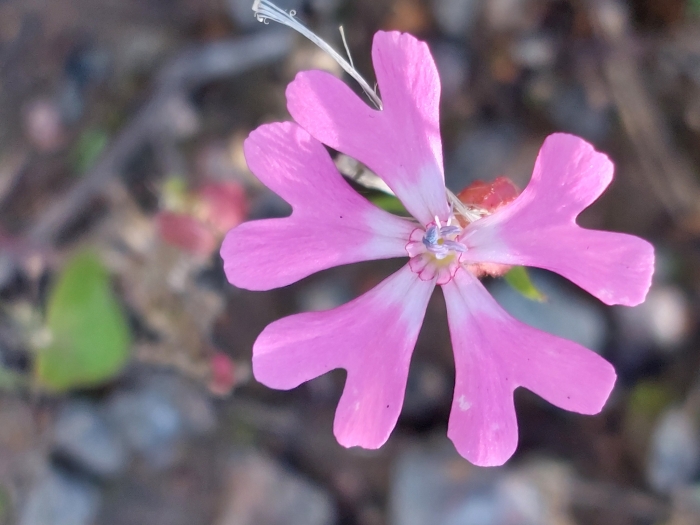Nodding Catchfly
(Silene pendula)
Nodding Catchfly (Silene pendula)
/
/

© nuujaka
CC BY 4.0
Image By:
© nuujaka
Recorded By:
Copyright:
CC BY 4.0
Copyright Notice:
Photo by: © nuujaka | License Type: CC BY 4.0 | License URL: http://creativecommons.org/licenses/by/4.0/ | Uploader: nuujaka | Publisher: iNaturalist |














Estimated Native Range
Summary
Silene pendula, commonly known as nodding catchfly or drooping catchfly, is an annual herb native to the Mediterranean region, specifically Italy, Greece, and Turkey. It has been introduced to various locations across North America, South America, Africa, Europe, and Asia. This plant typically grows to a height of 12-18 inches (30-45 cm) and is characterized by its slender, drooping stems, which give it a delicate appearance. The nodding catchfly produces pink, tubular flowers that bloom from late spring to early summer, attracting pollinators such as bees and butterflies.
The nodding catchfly is valued for its ornamental flowers and is often used in rock gardens, borders, and as a ground cover due to its sprawling habit. It thrives in full sun to part shade and prefers well-drained soil, although it can tolerate a range of soil types. This plant is relatively low-maintenance, but it can self-seed prolifically, which may lead to unwanted spread in the garden. In regions where it is not native, Silene pendula can become potentially invasive, so it is important to manage its growth and prevent it from escaping cultivation.CC BY-SA 4.0
The nodding catchfly is valued for its ornamental flowers and is often used in rock gardens, borders, and as a ground cover due to its sprawling habit. It thrives in full sun to part shade and prefers well-drained soil, although it can tolerate a range of soil types. This plant is relatively low-maintenance, but it can self-seed prolifically, which may lead to unwanted spread in the garden. In regions where it is not native, Silene pendula can become potentially invasive, so it is important to manage its growth and prevent it from escaping cultivation.CC BY-SA 4.0
Plant Description
- Plant Type: Herb
- Height: 0.5-1.5 feet
- Width: 0.5-1.5 feet
- Growth Rate: Moderate
- Flower Color: Pink
- Flowering Season: Summer
- Leaf Retention:
Growth Requirements
- Sun: Full Sun, Part Shade
- Water: Medium
- Drainage: Medium
Common Uses
Border Plant, Butterfly Garden, Groundcover, Low Maintenance, Rock Garden
Natural Habitat
Native to the Mediterranean region
Other Names
Common Names: Weeping Catchfly, Drooping Catchfly
Scientific Names: , Silene pendula, Silene barbata, Silene cisplatensis, Silene cretica, Silene crispa, Silene graeca, Silene pendula var. ruberrima, Silene rosea,
GBIF Accepted Name: